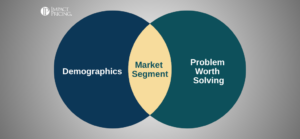You can listen to the full audio version of this blog we call — Blogcast.
The answer is obvious. They don’t know the value of your product.
The CEO of a $15M company said to me, “My salespeople don’t sell the value of our products. Can you help?” I love being asked to do something where I’ll have a big impact. So I asked him, “What’s the value of your product?”
He started by telling me a HUGE ROI number. Then I asked how he supported that. He listed the most valuable features. He gave examples of what his product does. But he didn’t tie any of that back to the ROI. It was obvious to me why his salespeople didn’t sell value. They didn’t know what it was. He didn’t know … but he thought he did. The huge ROI number may have been real, but they couldn’t explain it.
I remember when I had a “real” job and tried to convince my employer to spend money on a new pricing system. The huge ROÍ made this a no-brainer decision. If the pricing system only produced 1% more revenue, all profit, of course, the system would pay for itself many times over, and quickly. The value was huge, but I was unconvincing.
In my next job at a different company, I tried again. This time, instead of using an overall huge ROÍ number, I asked many people and departments across the company where we were losing money due to not having the right pricing information at the right time. I found about 10 of these and quantified the profit lost due to each one.
For example, some customers would ask for price quotes through multiple different channels, all of which filtered up to our company for discount approvals. But because we didn’t recognize it was the same company, they were often quoted different prices. Of course, they accepted the quote with the lowest price. We manually looked through about 100 deals to identify how often this happened and how much money we gave away per deal on average. We then multiplied that by the number of deals in a year to approximate how much profit we lost.
The details of that calculation don’t matter to this article. What matters is the specificity. I added up the total profit lost per year from the ten specific situations where we lost money and calculated over $100M per year in lost profit. This time, the company bought the system.
I wasn’t a salesperson, but I was selling inside the company. And the lesson I learned was that vague promises of huge ROÍ don’t convince people to act. Specific examples do.
The CEO who asked me to teach his people to sell value knew the big picture ROÍ, but he couldn’t provide quantifiable specifics.
Of course, every customer’s specifics are different, but the key to selling value is knowing where to look. In my quest to justify a new pricing system, I could imagine a salesperson making the process easier by helping me identify where we lost profit. Imagine if a salesperson had helped me with the specifics in my first attempt to justify a pricing system. The outcome could have been different. Your salespeople can and should learn to do this.
ROÍ is a fabulous concept when selling to businesses, but it has to be believable. Specifics make it believable. If you want your salespeople to learn to sell value, they need to know the specifics, not just the generalities. The specifics make your ROI believable.
How do you communicate value?
Share your comments on the LinkedIn post.
Now, go make an impact!
 Tags: pricing, sales, value, value-based pricing
Tags: pricing, sales, value, value-based pricing













